by Karsonya “Kaye” Wise Whitehead, Ph.D.
The goal of the A Writer with Writers blog series is to interview interesting and engaging authors and explore the ways in which they use their pen and paper to think about some of the issues with which our country is struggling. My questions range from defining democracy to defining liberation; from analyzing the strength of community organizing to finding ways to bend our privilege to make substantive changes; from understanding the legacy of the Civil Rights Movement to measuring the ongoing impact of the Black Lives Matter social movement.
This month, in celebration of National Hispanic Heritage Month and in an effort to continue our conversations about protest and community engagement, I sat down with Dr. Darrel Wanzer-Serrano to talk about his latest book, The New York Young Lords and the Struggle for Liberation.
Kaye Whitehead: Your book seems to have some good parallels to Baltimore’s current uprising. How do you see your book connecting to our city?
Darrel Wanzer-Serrano: I think that one of the great lessons of the Young Lords (and they are, by no means, the only group of the era to offer this lesson) is to never underestimate the ability of a group of young people to change things. Young folks are at the cutting edge of new communication practices and technologies, they’re at the forefront of new ideas operating on the ground, and they have their pulse on the communities in which they reside. Another connection is something I write about most explicitly in the intro and conclusion: community control. As in Baltimore today and in other eras, the Young Lords demanded that communities have some level of control over institutions and land, that the people must have a say in the decisions that impact their daily lives. Finally, I think there’s something to the connections between racism, sexism, and capitalism that the Young Lords so aptly diagnosed in their time—something that can be helpful in explaining the conditions that gave rise to the recent Baltimore Rebellion.
KW: Who are some of your greatest writing influences?
DWS: Most, but not all, of my influences come from the other scholars that I read, and that list is constantly shifting. I love the way that my grad school mentor, John Louis Lucaites, writes his endnotes. I’m drawn to the complexity of folks like Chela Sandoval, whose Methodology of the Oppressed is a marvel of decolonial[1] feminist scholarship. I’m drawn to the imaginative interplay between content and form in the work of Gloria Anzaldúa and other decolonial feminist scholars and artists.
KW: What does being a writer mean to you?
DWS: To me, being a writer means that I am enacting a set of commitments to social responsibility with/to various real and imagined audiences. Writing emerges from my own embodiment and geo-political locatedness, which is something that I feel compelled to recognize explicitly in my written work. Being a writer who is a critical rhetorician, I see my task as fundamentally persuasive in the sense that I’m trying to get my readers to understand some aspect(s) of the world differently than they had before.
KW: Are there any subjects that you find it difficult to write about? Why?
DWS: I’ve been having a hard time writing about how to challenge racism(s). (Don’t get me wrong—I think writing about the histories of racism and anti-racist struggle, as complicated and complex as they might be, is relatively straightforward.) When I think about how to get my predominantly white, Midwestern students to commit to anti-racist struggle, I am more prone to draw blanks. This isn’t a writing problem, per se; rather, it’s more of a conceptual problem of how to efficiently and comprehensively (a paradox, to be sure) make the case to young white people who lack a vocabulary for talking about race and racism in public.
KW: In honor of National Hispanic Heritage Month, what are some books that you would recommend that elucidate the Hispanic culture?
DWS: The first is the second edition of Juan Gonzalez’s Harvest of Empire. It’s probably my favorite history of the Latino/a experience in the US. Gonzalez (a former Young Lord) is a wonderful writer and does a marvelous job weaving together Latino/a historiography, primary sources, and oral histories to tell the complex story of how Latino/a people came to be. The second is Raquel Cepeda’s Bird of Paradise, which is a memoir that tells the tale of her troubled childhood and coming-to-be as her own self. She engages complex issues of Latino/a history and anti-blackness, along with her own journey of personal discovery as she traces her ancestral roots.
[1] Decolonial: relating to the act of getting rid of colonization, or freeing a country from being dependent on another country
About the Author: Darrel Wanzer-Serrano, Ph.D., is Associate Professor of Rhetoric and Public Advocacy in the Department of Communication Studies, and founding member of the Latino/a Studies Minor Advisory Board, at The University of Iowa. He is a critical rhetorical historian whose research is focused on the intersections of race, ethnicity, and public discourse, particularly as they relate to formations of coloniality and decoloniality in the United States and within Latino/a contexts. Follow Dr. Wanzer-Serrano on Twitter or Facebook.
About the Interviewer: Karsonya “Kaye” Wise Whitehead, Ph.D. is Associate Professor, Department of Communication at Loyola University Maryland and the Founding Executive Director at The Emilie Frances Davis Center for Education, Research, and Culture. She is creator of the #SayHerName Syllabus. Her new anthology, RaceBrave, was published in March 2016.


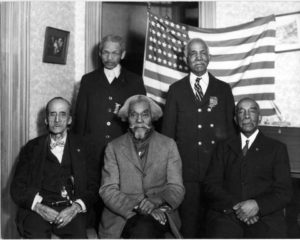
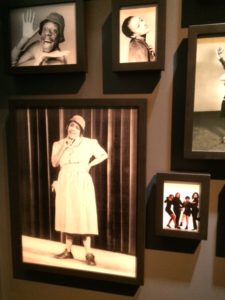
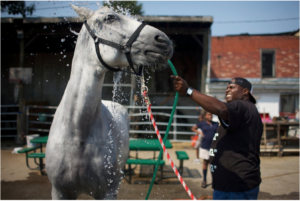
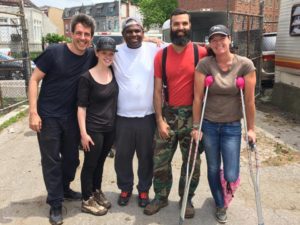
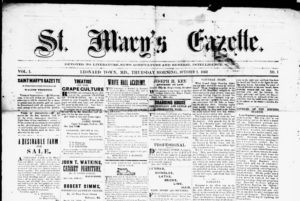


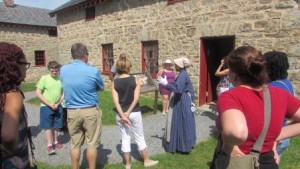
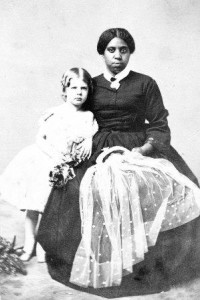
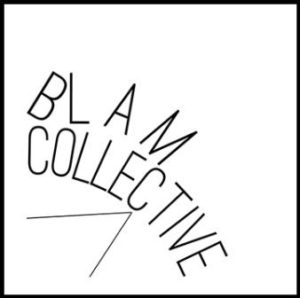
 After returning to Baltimore, I knew I wanted to start a group that served as a place to meet people, talk about work in a non-stressful environment, and learn new things. Creating a group that limits who can join was never something I considered. I’d much rather be part of a group that fosters discussion around difficult or unpopular topics while focusing on outreach to minorities to have a seat at their community table. The second bLAMcollective meetup was a discussion about whiteness and librarianship based on Angela Galvan’s article “
After returning to Baltimore, I knew I wanted to start a group that served as a place to meet people, talk about work in a non-stressful environment, and learn new things. Creating a group that limits who can join was never something I considered. I’d much rather be part of a group that fosters discussion around difficult or unpopular topics while focusing on outreach to minorities to have a seat at their community table. The second bLAMcollective meetup was a discussion about whiteness and librarianship based on Angela Galvan’s article “